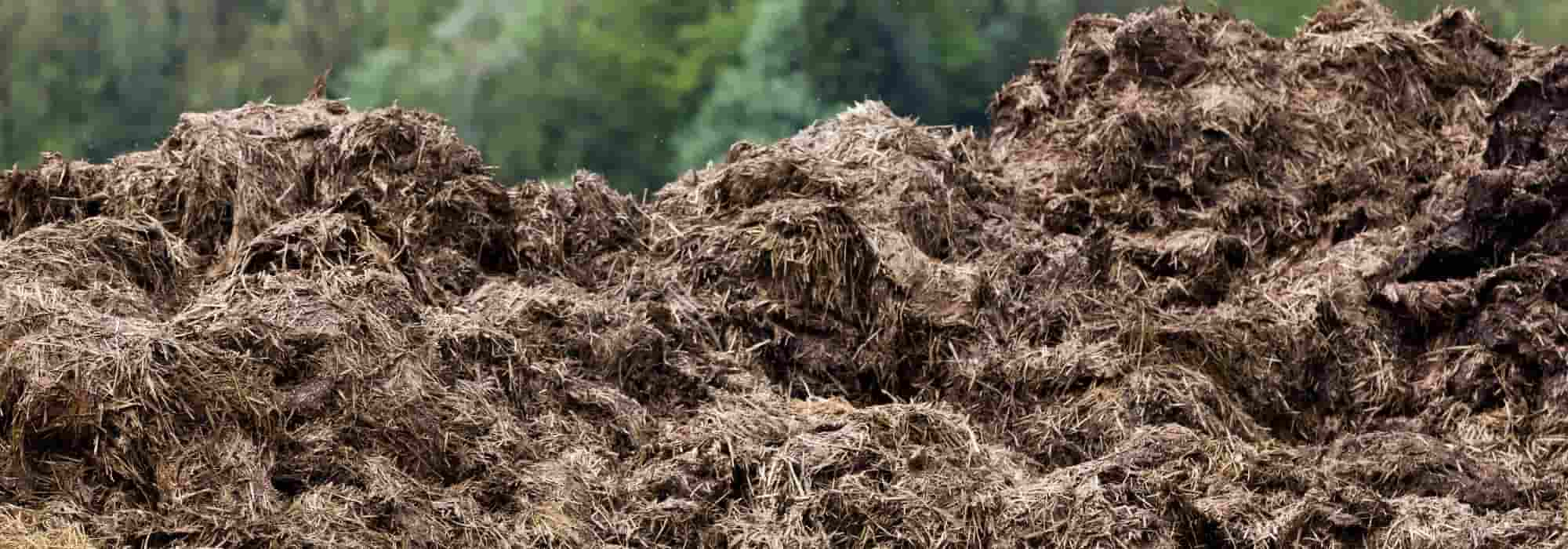
When and how to use manure in the vegetable garden?
All our tips for making good use of manure
Contents
Country walks are always accompanied by the scents of manure. Whether from cattle, equines, poultry, or sheep, this manure has been regarded for millennia as a valuable asset for the soil and the harvests. A mixture of plant material such as straw and animal droppings, manure is a particularly useful amendment for the vegetable garden. It also contains nutrients (nitrogen, phosphorus, and potassium) and organic matter that enrich the soil. However, excessive or poorly managed use of manure in the vegetable garden can be detrimental. I will explain when and how to spread this manure in the vegetable garden to achieve the best results in amendment and fertilisation.
Why use manure in the vegetable garden?
Unlike a fertiliser that acts directly on the growth of the young plant, manure is considered an amendment. This means that it improves the structure of the soil by aerating it or making it more compact. Similarly, as it decomposes, manure increases biological activity and inoculates the soil with a multitude of microorganisms that maintain or create humus. Finally, because it is rich in nitrogen, potassium, and potash, manure enriches the soil and promotes the development of plants.
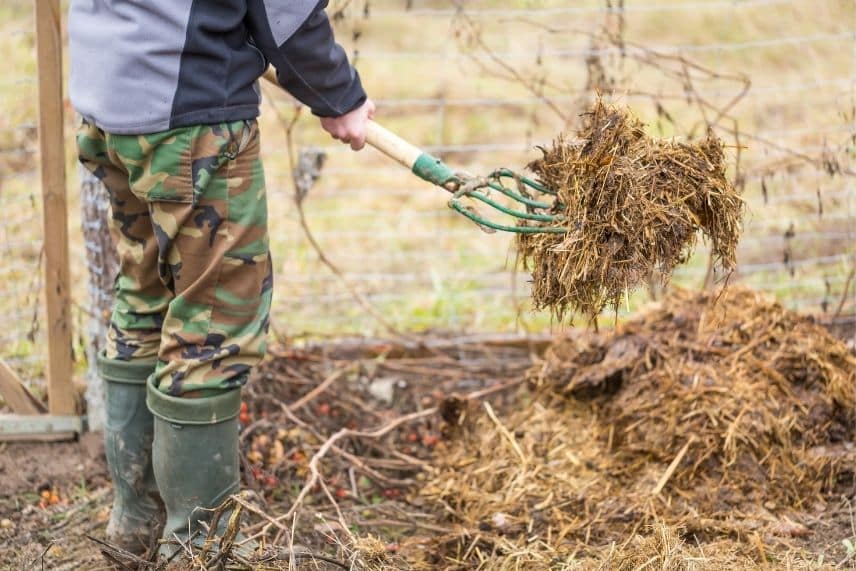
In the vegetable garden, manure improves soil structure and fertilises the land
A distinction is made between hot manure and cold manure. Hot manure decomposes more quickly, heats the soils, and is better suited for compact, heavy, and clayey soils. In contrast, cold manure decomposes slowly and is ideal for soils that are calcareous or siliceous, which are generally lighter.
Read also
Manure in 10 Questions / AnswersThe importance of choosing it wisely...
The choice of manure should not be made at random, as it could be counterproductive for your vegetable garden. Beyond the type of manure, attention must also be paid to its “age” and source.
Different Types of Manure
As manure consists of animal droppings mixed with litter (rich in carbon), there are various types of manure:
- Equine manure (horses and donkeys): this is a very hot manure that lightens heavy soils.
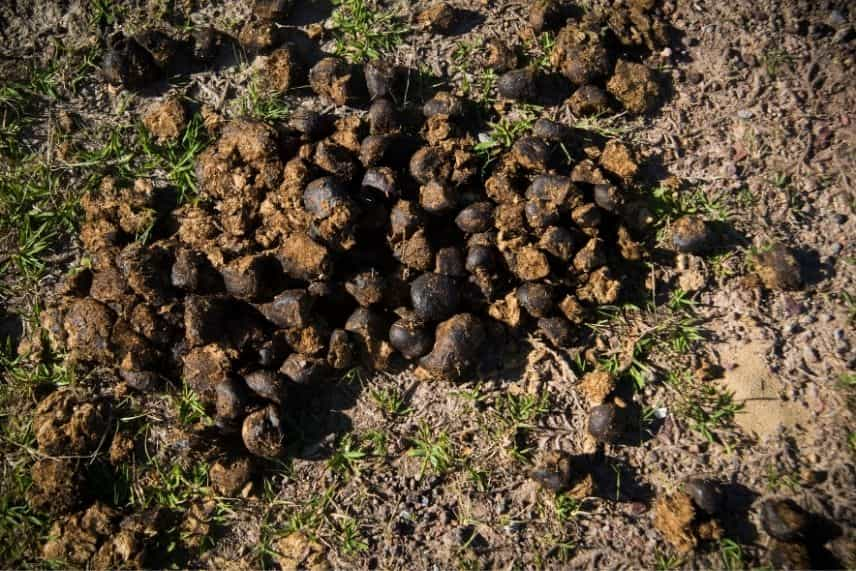 Horse manure is one of the most commonly used and beneficial for the vegetable garden.
Horse manure is one of the most commonly used and beneficial for the vegetable garden.
- Bovine manure (cows): this is a cold manure, quite slow to decompose, therefore intended for light soils.
- Ovine manure (sheep and goats): this is a hot manure, very rich in potash. It decomposes slowly.
- Poultry manure (laying hens or chickens): this is a manure very rich in nitrogen and should be used sparingly. It is best to avoid using it raw and ideally mix it with compost. I explain, in another article, how to use your hens’ droppings effectively in the vegetable garden.
- Pig manure is cold manure but very liquid. It is mainly used by farmers and very little in vegetable gardens.
- Rabbit manure is also hot manure rich in nitrogen.
The Age of Manure
Manure is considered fresh when it has just been produced by animals. It has not yet begun its decomposition process. Conversely, aged or mature manure is at least 6 months old. It has been stored in a heap outdoors and has started its degradation process. At the core of the heap, a temperature of at least 50 °C must be reached to destroy potential pathogens. Ideally, this manure heap should be slightly elevated on pallets to allow air circulation and liquid drainage.
Composted manure is also available. This is manure that has aged, integrated into compost, mixed with organic waste and plant residues (branches/straw/leaves). This process takes over a year, and again, the temperature reaches at least 50 °C. The compost should be turned regularly and maintained at the right level of moisture. This composted manure can be homemade or purchased in bags.
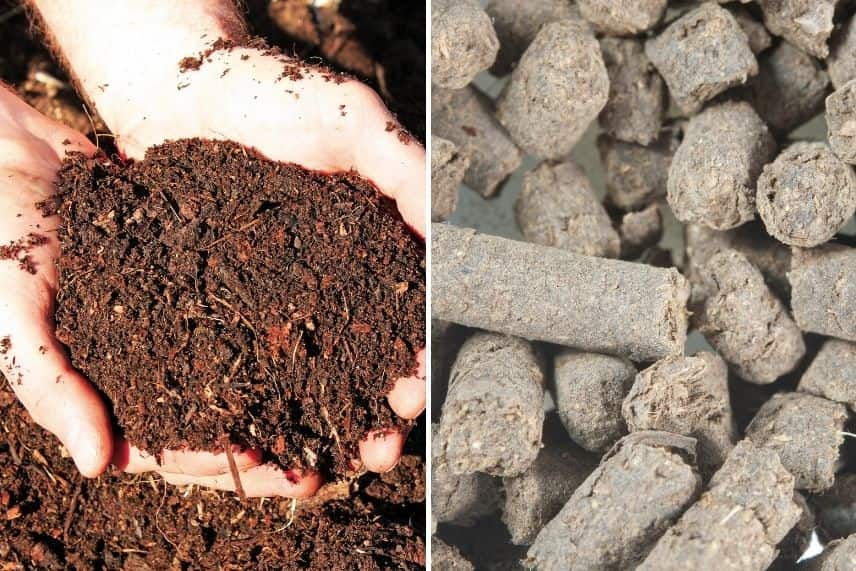 Composted manure and pelletised manure.
Composted manure and pelletised manure.
It is also possible to obtain pelletised manure today. Virginie tells you all about this pelletised manure. Meanwhile, Olivier explains in images how to use it.
The Source of Manure
If you are fortunate enough to obtain fresh or aged manure from a farmer or an equestrian centre, be sure to inquire beforehand about the farming methods of the operation or the treatments administered to the animals.
When and how to spread manure?
There are two main periods for spreading manure. But never forget that fresh manure should not be placed at the base of your vegetable plants, as it will surely scorch them.
Two scenarios can be distinguished:
- Fresh or slightly decomposed manure is spread in autumn on the bare soil of the vegetable garden. It will have all winter to decompose properly and transform into humus with the help of microfauna. Simply distribute it evenly over the soil without burying it. You can also cover it with a thin layer of straw or fallen leaves to protect it from the elements. Then, in spring, at planting time, just scratch it in to finish incorporating it into the soil.
- Mature or composted manure is spread at the end of winter, in March. It should be distributed over the soil after digging, then lightly buried a few centimetres deep by simply passing a rake over it.
 Fresh manure is spread in autumn, while composted or well-decomposed manure is applied in spring.
Fresh manure is spread in autumn, while composted or well-decomposed manure is applied in spring.
As for the amount of manure to spread, it varies depending on the type of manure, but especially the nature of the soil or the vegetables, which may be more or less greedy, that will be cultivated. Additionally, it is not recommended to incorporate manure every year. Generally, to amend and fertilise soil, 3 to 5 kg of manure per m² is recommended. Then, every 2 to 3 years, spread 1 kg per m².
Other uses of manure in the vegetable garden
Always in the vegetable garden, manure, particularly horse manure, can be used for other cultivation methods. It can be integrated into a hot bed or into a lasagne mound, directly inspired by permaculture.
The Usefulness of Manure in the Hot Bed
The hot bed technique is practised in a frame, facing south, and allows for the cultivation of vegetables in mid-winter. The hot bed is prepared in mid-November for planting in January.
Specifically, it involves digging a hole the size of your frame and 50 to 60 cm deep. Fill the hole with a mixture of horse, sheep, or rabbit manure mixed with organic waste such as fallen leaves, straw, and shredded branches. Then, compact it carefully by stepping on it and water it. Finally, cover with a layer of potting soil 15 to 20 cm thick and replace your frame.
In about ten days, the hot bed will reach a temperature of 60 to 70 °C, known as the “heat spike.” After that, the temperature drops to around 25 °C, the ideal temperature for sowing, after lightly raking the surface.
To learn more about the hot bed, feel free to check out Solène’s articles: How to make a hot bed? or Ingrid’s: sow in warmth or on a hot bed
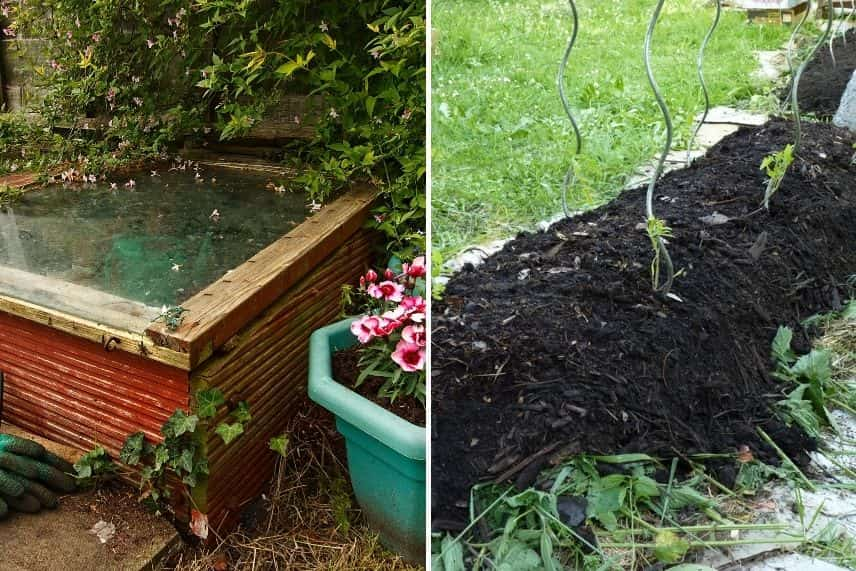
Manure is used for cultivation in hot beds or mounds
Manure in a Lasagne Mound
Again, this is a cultivation method involving different superimposed layers that form a mound, ideal for growing greedy vegetables. These mounds are prepared in autumn to be ready by late winter.
They consist of a first layer of coarsely shredded branches. Next, a layer of about 5 cm made up of grass clippings, adventive plants, and vegetable peelings is added. The next layer, 10 cm thick, consists of decomposing manure, possibly supplemented with fallen leaves or straw. Finally, the mound is topped with a 20 cm layer of well-matured compost. To protect the mound during winter, it can be covered with fallen leaves, straw, or branches.
This mound can be created over several days or weeks. It is important to water each layer generously.
In spring, you can transplant tomatoes or courgettes there.
To retain the mound on the sides, you can place logs. These lasagne mounds are primarily intended for gardens with poor soil, too acidic or too calcareous.
- Subscribe!
- Contents
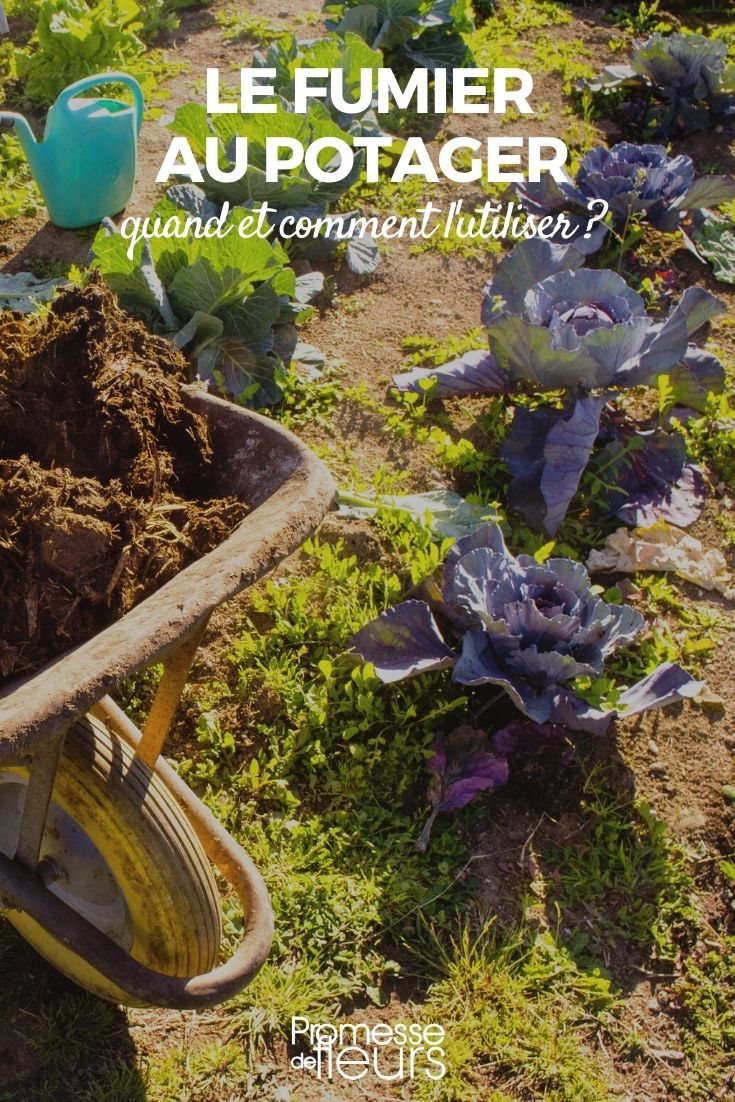































Comments